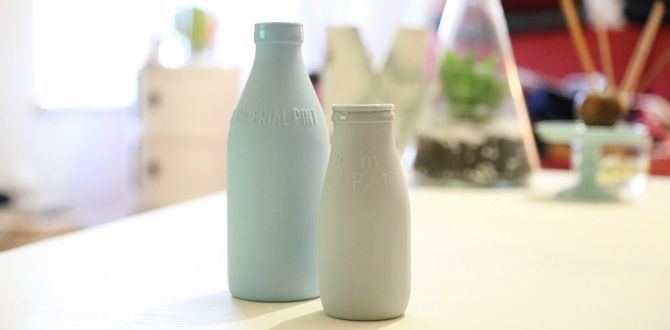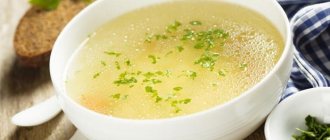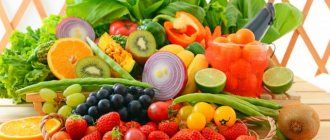The topic of breastfeeding is quite extensive. And no matter how much parents study this issue, final and unambiguous answers cannot always be found. Thus, one of the most common problems is a lack of breast milk, which makes it impossible to establish breastfeeding. As a result, women often refuse to breastfeed, not bothering themselves with attempts to establish breastfeeding. But the supply of milk depends on numerous factors, including the physical and emotional state of the woman, the correct attachment of the baby to the breast and, most importantly, sufficient stimulation of the nipple of the female breast by the child. Thanks to the last factor, the impulse from breast stimulation enters the brain, to the area that is responsible for lactation. If the stimulation is sufficient, milk will be produced in the right quantity, and then breastfeeding will be long and successful.
General rules
Breastfeeding is a natural way of feeding your baby.
Human milk is an optimal product, highly digestible with a balanced content of all nutritional nutrients, including biologically active substances that protect the immature child’s body from the effects of adverse factors. However, the composition of milk is largely determined by the mother's diet. Therefore, a woman’s nutrition during breastfeeding is the most important factor in the child’s health, since almost everything that a woman eats is present in milk in one form or another. Unfortunately, there is no single view on nutrition during breastfeeding. First of all, approaches to nutrition for nursing mothers in post-Soviet states and other civilized countries vary significantly, and this especially applies to various dietary restrictions/numerous prohibitions that can be found in the CIS countries.
Unlike such countries, there are practically no restrictions on the diet of a nursing woman in most countries of the world. A nursing mother, if desired, can eat almost any food in reasonable quantities. After all, a woman herself can monitor the connection between the consumption of certain products and the well-being of the child. And if she sees that your child’s health is normal, then why limit herself, and if the child has any problems, then she herself will adjust her diet. So where is the truth? Let's see what Dr. Komarovsky, a recognized authority in most families with children, writes about this.
First of all, according to Komarovsky, the diet of nursing mothers should be as varied as possible and include cereals and pasta, fermented milk products without additives, cottage cheese, dietary types of meat and fish, vegetables, fruits, and nuts. The main principle of drawing up a diet is its balance, that is, it must contain all the necessary components needed by the child - proteins, fats, carbohydrates, vitamins (C, D, group B), minerals (calcium, iodine, iron, magnesium), unsaturated fatty acids ( omega-3 and omega-6 ).
The calorie content of a woman’s daily diet in the first six months should be about 2700-2800 kcal. Reducing caloric intake is not recommended, as this is dangerous for the child. You will lose weight and regain your figure later. Insufficient nutrition of the mother leads to insufficient milk production, accordingly, the child will not receive enough nutritional nutrients. In this case, the baby develops excessively watery stools that are close in consistency to water, the baby loses the rate of weight gain, the baby is lethargic, sleeps a lot, the urine acquires a pungent odor, and signs of dehydration (recession of the fontanel).
Many mothers are concerned about the issue of fat content in their diet. Fats are definitely necessary and important. However, a “golden mean” is needed here. You should not completely exclude or “lean on” sour cream, cream, butter in order to increase the fat content of milk, but their use should be limited. Preference should be given to vegetable fats (linseed, olive, sunflower oil). But what is recommended to be excluded from the diet is fatty meat, fatty sausages, trans fats, animal/cooking fat, mayonnaise, margarine.
It is also worth remembering that cooking food by frying is accompanied by the addition of fat, so it is better to limit fried foods or consume them in small quantities.
A relatively strict diet during breastfeeding according to Komarovsky should only be in the first 1-2 months after birth, since the woman’s body has not yet fully recovered, the child continues to develop digestion and his reaction to the inclusion of certain foods in the diet is unknown. Therefore, in the first month the diet should be strict, which you can read about in the article “Mom’s Diet While Breastfeeding”, and then new foods should be carefully introduced into the diet, gradually expanding it.
This is especially true for vegetables, which during this period must be present in the diet, but it is better to consume them boiled or baked, as well as products with a high allergenic potential (whole cow/goat milk, cocoa and coffee). You should also more closely monitor the diet until the child is three months old, since during this period the child is most often susceptible to colic.
When choosing products, preference should be given to fresh natural products, avoiding products containing GMOs, dyes, preservatives, and flavor enhancers. Therefore, you should not include semi-finished products, fast food products, or canned food in your diet.
As for restrictions, according to Komarovsky, the nutrition of a nursing mother should exclude:
- Products that change the taste of milk (spicy, salty, sour and smoked products) and its smell (garlic, onion).
- Potentially highly allergenic foods (sweets, citrus fruits, chicken eggs, whole milk, red and yellow vegetables/fruits, chocolate, caffeine-containing drinks).
- Legumes and white cabbage, black bread, pickled vegetables, bananas, grapes, kvass, cucumbers, confectionery products that cause intestinal upset in a child ( flatulence , diarrhea ).
Also, Komarovsky believes that the basis for preparing a woman’s diet during breastfeeding should be, first of all, common sense and monitoring the child’s condition, as well as monitoring the reaction to each new product. The list of foods in the diet can vary significantly and depends mainly on the newborn’s individual reaction to the foods. The mother herself can decide how best to eat, observing the reaction and condition of her baby, who, with his behavior, condition of the intestines and skin, will “tell” her to refuse feeding in cases where the taste of milk has changed and he does not like it.
To do this, you can keep a food diary in which the mother displays her menu, newly introduced foods into the diet and the baby’s reaction. If you are in doubt about any product (it is possible or not), eat a little and monitor the child’s reaction. If a rash does not appear, stool and sleep have not changed - introduce the product into the diet, but not immediately in large quantities, but gradually, increasing its content over 2-3 days. This algorithm for introducing a new product is important because there is a time lag between the use of the product, its quantity and the manifestation of an allergic reaction. Keeping a diary and carefully monitoring the child’s reaction to newly introduced foods will help timely and accurately determine the allergenic factor. If a rash or gastrointestinal upset appears, the cause must be sought in a new product introduced recently.
Equally important for sufficient and prolonged lactation is the drinking regime. The volume of liquid consumed should be at least 1.5 l/day, mainly in the form of still table water, compotes, fruit drinks, and green tea. It is recommended to drink 200 ml of water 10-15 minutes before feeding the baby. You should not consume fluids in excess of the norm, since this can cause excess milk production and stagnation ( lactostasis ), and also increases the load on the kidneys.
Complementary feeding by month according to Komarovsky
Complementary feeding by month, according to Komarovsky, has its own characteristics. The regimen for introducing products differs from pediatric norms. First, kefir and cottage cheese are introduced, and then vegetables, apples, porridge and other dishes.
Table of contents
|
When is the baby ready to introduce a new food?
According to Komarovsky, the purpose of introducing complementary foods is not to feed the baby, but to prepare him for adult nutrition.
The period of introducing new food is considered a way of adapting to the common table. Before feeding, you should determine the baby’s readiness for new food.
Komarovsky highlights physiological and psychological readiness for the introduction of complementary foods.
Physiological readiness is the maturity of the internal organs and larynx to consume new products.
The digestive system must produce enough enzymes to prevent dyspepsia and allergies. The muscles of the larynx must contract well so that the baby does not choke.
According to Komarovsky, it is recommended to begin introducing new products no earlier than 6 months of age.
The period of administration is the same for both babies on breastfeeding and on formula.
Signs of readiness:
• the baby's weight doubled after birth;
• baby sits on a chair;
• takes food from a spoon himself;
• turns away if he doesn't like the food;
• lack of tongue thrust reflex;
• The baby is interested in adult food.
The doctor does not welcome the introduction of new foods at 4 months of age, since the digestive organs are not yet mature and there are no signs of readiness.
Rules for introducing new food
Food is administered to infants according to the rules to avoid allergies and dyspeptic symptoms. Introduction Features:
• They begin to feed when there are signs of readiness.
• New dishes are not given 3 days before and after vaccination, moving, or traveling.
• Food is offered before taking mother's milk or formula.
• You should not force feed; it is better to offer complementary foods you don’t like after 7-10 days. It is advisable to repeat attempts 3-5-10 times.
• To introduce new food, it is advisable to use one-component meals. After the final introduction of complementary foods, it can be combined with already introduced products.
• The introduced product replaces one feeding with formula or breast milk.
• The break between different complementary foods is 7 days.
• Start giving ½ teaspoon, gradually increasing the amount of serving. As portion 1 increases, breastfeeding or milk replacer is completely replaced.
I am writing for the first time, it is advisable to give it in the morning before 12 noon. This makes it possible to observe the baby throughout the day. You cannot introduce new food when the baby is sick.
The doctor recommends that from the age of 7 months the baby be given the opportunity to eat on his own.
It is advisable to seat the child in a high chair for feeding, place a plate of food in front of him, and give him a spoon.
Mom or dad should put the same thing as the child, for example, cottage cheese. It is recommended to sit in front of the baby so that he can see an example.
This method of feeding allows you to quickly teach your baby to eat on his own.
Komarovsky does not recommend sitting your baby in front of the TV with food. The child will not understand the taste of food.
Complementary feeding by month, according to Komarovsky: 6 months of age
The doctor suggests starting the introduction of new foods at 6 months not with vegetables or cereals, but with kefir.
Fermented milk drink helps to establish microflora. The proteins in it are easily digestible.
Kefir is closest in structure to breast milk, so they start with a fermented milk product.
Start giving with 5 ml, gradually increasing the portion of kefir to 30 ml. After the final introduction of kefir, it replaces one breastfeeding.
7 months of age
After kefir, they begin to give the baby cottage cheese. After kefir, the baby’s body will better absorb cottage cheese.
The dish contains easily digestible proteins, fats, calcium, and vitamin D. These substances are necessary for growth and development.
It is recommended to give ½ spoon of cottage cheese on the first day, then increase the serving amount to 20 g.
It is advisable to buy cottage cheese in a store or make it yourself.
Also by 7 months of age a baked apple is included. Start with ½ tsp, gradually increasing the portion.
You cannot add baked apples together with cottage cheese. There is a 7-day break between administration of these products.
Menu
| Times of Day | Food |
| 06:00 | breast, milk replacer + baked apple 30 g. |
| 10:00 | kefir 70 ml + cottage cheese - 30 g |
| 14:00 | breast (milk replacer) |
| 18:00 | breast (milk replacer) |
| 22:00 | breast (milk replacer) |
8 months of age
By the 8th month you can include vegetables, egg yolk, fruit and vegetable juices, and porridge with milk.
All these products are administered separately to avoid allergies. First, it is recommended to give the baby vegetable puree.
Next enter:
- juice;
- porridge;
- vegetable oil;
- yolk.
Give no more than 1/4 of the yolk. It is not recommended to give more, as the product is allergenic. It is permissible to add the yolk to vegetables or porridge.
Komarovsky does not recommend giving little butter until a year old. Vegetable oil can be added up to 1 g.
Menu
| Times of Day | Food |
| 06:00 | porridge 70 g + yolk 1/4 |
| 10:00 | breast, milk replacer |
| 14:00 | vegetable puree |
| 18:00 | breast, milk replacer |
| 22:00 | breast, milk replacer |
The number of introduced dishes is increased:
- cottage cheese - 40-50 g;
- kefir – 90-100 ml;
- apple – 40-50 g;
- vegetables – 70 g;
- juice - 10 ml.
The porridge portion is adjusted to 70 g.
9 months
By 9 months of age it is permissible to introduce meat. They start with turkey, rabbit. These are the most hypoallergenic varieties of meat products.
Next they include chicken and beef. The first portion should not be more than 5 g.
Meat is introduced late, since the food is heavy for the baby’s digestive system.
Diet
| Times of Day | Food |
| 06:00 | porridge with baked apple – 100 g |
| 10:00 | breast, milk replacer |
| 14:00 | kefir 100 ml, cottage cheese 50 g |
| 18:00 | ground meat 50 g, vegetable puree – 50 g |
| 22:00 | breast, milk replacer |
The number of introduced dishes is increased:
- cottage cheese - 50 g;
- kefir – 100 ml;
- apple – 50 g;
- oil – 3 g;
- meat – 30 g;
- vegetables – 100 g;
- juice - 20 ml.
It is recommended to give 100 g of porridge.
10 months of age
By the 10th month fish is included. The late date of introduction is explained by the high allergenicity of the product.
It is necessary to give from 5 g, gradually increasing the portion to 20 g.
Komarovsky does not recommend offering more than 20 g of fish to a ten-month-old child.
Diet
| Times of Day | Food |
| 06:00 | porridge 150 g + juice |
| 10:00 | breast, milk replacer |
| 14:00 | fish 20 g, potatoes – 130 g |
| 18:00 | Kefir 100 g + cottage cheese 50 g |
| 22:00 | breast, milk replacer |
Food servings for 10 months:
- cottage cheese - 50 g;
- kefir – 100 ml;
- oil – 3 g;
- apple – 50 g;
- vegetables – 150 g;
- juice - 30 ml.
It is permissible to eat porridge up to 150 g.
11-12 months
By the year all the main products had already been introduced. Breastfeeding is left only at night or in the morning.
Recommended servings:
- cottage cheese - 50 g;
- kefir – 100 ml;
- oil – 3 g;
- apple – 70 g;
- vegetables – 150-200 g;
- juice - 70 ml;
- meat – 70 g;
- fish – 40 g.
It is not advisable to make more portions.
By the age of Komarovsky, it is recommended to leave one feeding with breast milk. Breastfeeding helps maintain the bond between baby and mother.
Mother's milk helps fight infections and improves digestion. For this reason, it is recommended to continue breastfeeding until 1 year of age.
Buy puree or cook at home
The doctor recommends giving the baby industrial puree. This opinion is explained by the high risk of poisoning from dishes prepared at home.
To make puree, mothers buy vegetables and fruits at the market. It is not known how the crops were grown, how much fertilizer was added, or how they were stored.
Industrial food is tested for the presence of nitrates and chemical additives, so it is safe for babies.
Useful tips for mothers: FIRST FEEDINGS
The likelihood of poisoning, with proper use of industrial food, is low.
The puree produced in factories is additionally fortified to compensate for the lack of microelements and vitamins.
Rules for the use of industrial products:
• Check the expiration date: the product must be fresh.
• Do not use expired food.
• Do not store an open jar in the refrigerator for more than 12-24 hours.
• Buy food according to age.
These rules will help avoid poisoning. If there is any puree left in the jar, it is better for the parents to finish it and for the baby to open a new one at the next feeding.
The disadvantage of industrial power supply is the high cost.
If your budget does not allow you to buy jars all the time, you can use them when introducing complementary foods for the first time.
In the future, industrial puree is replaced with homemade puree.
How to cook meals at home:
• It is recommended to cook vegetables for at least 40-60 minutes.
• The meat is boiled for at least an hour if it is rabbit, turkey, or chicken. The beef is cooked for 2 hours. You can't cook less. Pork is not used until 1 year.
• It is better to cook the fish for 30-40 minutes. During this time, all pests will die.
After cooking, the puree is made using a clean blender. After using the device, it must be washed and dried.
It is recommended to use vegetables and fruits from your own garden to make dishes.
You can also buy from private farms, where they do not use chemical fertilizers and store products correctly.
If you cannot buy high-quality fruits and vegetables, it is better to buy industrial purees.
You only need to prepare homemade puree for one feeding. Do not leave the ground mass in the refrigerator for more than 2 hours. The product spoils quickly.
This can lead to an intestinal infection. Frequent causative agents of the disease are staphylococcus and salmonella.
According to Komarovsky, complementary foods are recommended to be introduced no earlier than 6 months of age.
First include kefir and cottage cheese.
Next, vegetables, yolk, apples, and cereals are introduced. After 6 months, the doctor does not recommend starting complementary feeding, as a deficiency of vitamins and microelements develops, even if the mother has enough milk.
Before using the Komarovsky technique, it is advisable to consult with a pediatrician at the site.
- about the author
- Recent publications
Olga Kuznetsova
author of the publication (site editor)
DOCTOR - PEDIATRIC Education: Siberian State Medical University. Certificate of specialist in the specialty "Pediatrics"
Olga Kuznetsova recently published (see all)
- At what age can a child have an omelet - 10/05/2020
- Hypoallergenic diet for mom - 10/03/2020
- How to introduce eggs into complementary foods for a child - 09/27/2020
Authorized Products
The diet of a nursing mother according to Komarovsky includes:
- Wheat bread with bran/cereal, dry biscuits, grain crispbread, non-sweet biscuit.
- Various cereals, cooked in water or with the addition of 1/3 milk, cereal products (casseroles with cottage cheese, puddings).
- Dietary varieties of meat (veal, rabbit, beef, chicken) and fish (cod, hake, pollock, pike perch, blue whiting, bream) in whole pieces or in the form of steam cutlets.
- Vegetable and cereal soups in secondary meat broth with the addition of pieces of boiled meat, meatballs, quenelles.
- Vegetables (at least 500 g/day) boiled or, if the child is well tolerated, fresh. It is recommended to use neutral vegetables: zucchini, squash, beets, carrots, pumpkin. It is better to eat green vegetables fresh, and heat-treat brightly colored ones (yellow and orange). But you need to introduce vegetables boiled or stewed.
- Fermented milk products (600-800 ml/day) - yogurt, kefir, acidophilus, natural yogurt, cottage cheese or dishes based on it. It is better to use sour cream and cream as an additive to ready-made dishes. The optimal fat content for fermented milk products is 2.5%, and for cottage cheese - 5-9%. Zero-fat products are not suitable for nursing mothers.
- Fruits/berries (up to 300 g/day). It is recommended to start eating fruits with green or white apples, then introduce other types (pears, gooseberries, currants, cherries), you are allowed to use baby juices, fruit purees, juices (preferably with pulp), baked apples and pears (200-300 ml) . Dried fruits are allowed to be consumed, but they must be introduced into the diet carefully, observing the child’s stool.
- From fats, you can consume butter (25/day) and cold-pressed vegetable oils (15 g/day) (olive, corn, sunflower, flaxseed), adding them to porridges, salads, and baked/boiled vegetables.
- Among confectionery products, you can occasionally include marshmallows, meringues, marshmallows, and fruit marmalade.
- Drinks - green tea without aromatic additives, still table water, compotes and fruit drinks, rosehip decoction, teas with mint, thyme, oregano.
Table of permitted products
| Proteins, g | Fats, g | Carbohydrates, g | Calories, kcal | |
Vegetables and greens | ||||
| zucchini | 0,6 | 0,3 | 4,6 | 24 |
| cauliflower | 2,5 | 0,3 | 5,4 | 30 |
| potato | 2,0 | 0,4 | 18,1 | 80 |
| carrot | 1,3 | 0,1 | 6,9 | 32 |
| pumpkin | 1,3 | 0,3 | 7,7 | 28 |
Fruits | ||||
| bananas | 1,5 | 0,2 | 21,8 | 95 |
| cherry | 0,8 | 0,5 | 11,3 | 52 |
| pears | 0,4 | 0,3 | 10,9 | 42 |
| plums | 0,8 | 0,3 | 9,6 | 42 |
| apples | 0,4 | 0,4 | 9,8 | 47 |
| baked sweet apples | 0,5 | 0,3 | 24,0 | 89 |
Berries | ||||
| gooseberry | 0,7 | 0,2 | 12,0 | 43 |
Nuts and dried fruits | ||||
| dried fruits | 2,3 | 0,6 | 68,2 | 286 |
Cereals and porridges | ||||
| buckwheat (kernel) | 12,6 | 3,3 | 62,1 | 313 |
| oat groats | 12,3 | 6,1 | 59,5 | 342 |
| cereals | 11,9 | 7,2 | 69,3 | 366 |
| pearl barley | 9,3 | 1,1 | 73,7 | 320 |
| Wheat groats | 11,5 | 1,3 | 62,0 | 316 |
| millet cereal | 11,5 | 3,3 | 69,3 | 348 |
| white rice | 6,7 | 0,7 | 78,9 | 344 |
| barley grits | 10,4 | 1,3 | 66,3 | 324 |
Bakery products | ||||
| white bread crackers | 11,2 | 1,4 | 72,2 | 331 |
| vysivkovy bread | 9,0 | 2,2 | 36,0 | 217 |
Confectionery | ||||
| jam | 0,3 | 0,2 | 63,0 | 263 |
| marshmallows | 0,8 | 0,0 | 78,5 | 304 |
| fruit and berry marmalade | 0,4 | 0,0 | 76,6 | 293 |
| meringues | 2,6 | 20,8 | 60,5 | 440 |
| paste | 0,5 | 0,0 | 80,8 | 310 |
| Maria cookies | 8,7 | 8,8 | 70,9 | 400 |
Dairy | ||||
| milk 2.5% | 2,8 | 2,5 | 4,7 | 52 |
| kefir 2.5% | 2,8 | 2,5 | 3,9 | 50 |
| sour cream 15% (low fat) | 2,6 | 15,0 | 3,0 | 158 |
| Ryazhenka 2.5% | 2,9 | 2,5 | 4,2 | 54 |
| acidophilus | 2,8 | 3,2 | 3,8 | 57 |
| natural yogurt 2% | 4,3 | 2,0 | 6,2 | 60 |
Cheeses and cottage cheese | ||||
| cheese | 24,1 | 29,5 | 0,3 | 363 |
| cottage cheese 5% | 17,2 | 5,0 | 1,8 | 121 |
| cottage cheese 9% (bold) | 16,7 | 9,0 | 2,0 | 159 |
Meat products | ||||
| lean pork | 16,4 | 27,8 | 0,0 | 316 |
| boiled beef | 25,8 | 16,8 | 0,0 | 254 |
| boiled veal | 30,7 | 0,9 | 0,0 | 131 |
| rabbit | 21,0 | 8,0 | 0,0 | 156 |
Bird | ||||
| boiled chicken | 25,2 | 7,4 | 0,0 | 170 |
| turkey | 19,2 | 0,7 | 0,0 | 84 |
Oils and fats | ||||
| butter | 0,5 | 82,5 | 0,8 | 748 |
Non-alcoholic drinks | ||||
| mineral water | 0,0 | 0,0 | 0,0 | — |
| green tea | 0,0 | 0,0 | 0,0 | — |
| black tea | 20,0 | 5,1 | 6,9 | 152 |
Juices and compotes | ||||
| Apple juice | 0,4 | 0,4 | 9,8 | 42 |
| * data is per 100 g of product | ||||
Fully or partially limited products
The diet of a nursing mother according to Komarovsky excludes:
- Foods with a high potential for allergic effects (fish roe, whole milk, citrus fruits, mushrooms, eggs, fish, seafood (especially shrimp and crab), crayfish, honey, cocoa, coffee, chocolate, bright red and orange fruits.
- Products and dishes that enhance fermentation processes in the intestines (kvass, legumes, rye bread, coarse vegetables, white cabbage, whole milk, yeast dough products, cucumbers), as well as products containing a large amount of essential oils (onions, garlic, celery, radish, spinach, radish).
- Tropical fruits (except bananas), fermented foods (cheeses, pickled vegetables), marinades.
- Rich meat and fish broths, canned meat and fish, fatty meats, fish, waterfowl, smoked meats, sausages, spices, hot spices and seasonings.
- Fast food products, products containing GMOs, dyes, preservatives, flavor enhancers.
- Confectionery, sweets, sugar, salt.
- Cooking, pork and beef fat, mayonnaise, margarine.
- Alcoholic and carbonated drinks.
Table of prohibited products
| Proteins, g | Fats, g | Carbohydrates, g | Calories, kcal | |
Vegetables and greens | ||||
| vegetables legumes | 9,1 | 1,6 | 27,0 | 168 |
| canned vegetables | 1,5 | 0,2 | 5,5 | 30 |
| swede | 1,2 | 0,1 | 7,7 | 37 |
| cabbage | 1,8 | 0,1 | 4,7 | 27 |
| cucumbers | 0,8 | 0,1 | 2,8 | 15 |
| parsnip | 1,4 | 0,5 | 9,2 | 47 |
| parsley (root) | 1,5 | 0,6 | 10,1 | 49 |
| radish | 1,2 | 0,1 | 3,4 | 19 |
| white radish | 1,4 | 0,0 | 4,1 | 21 |
| turnip | 1,5 | 0,1 | 6,2 | 30 |
| celery | 0,9 | 0,1 | 2,1 | 12 |
| horseradish | 3,2 | 0,4 | 10,5 | 56 |
| garlic | 6,5 | 0,5 | 29,9 | 143 |
| spinach | 2,9 | 0,3 | 2,0 | 22 |
| sorrel | 1,5 | 0,3 | 2,9 | 19 |
Fruits | ||||
| citrus fruits | 0,9 | 0,2 | 4,4 | 22 |
| tropical fruits | 1,3 | 0,3 | 12,6 | 65 |
| melon | 0,6 | 0,3 | 7,4 | 33 |
Berries | ||||
| grape | 0,6 | 0,2 | 16,8 | 65 |
Mushrooms | ||||
| mushrooms | 3,5 | 2,0 | 2,5 | 30 |
Bakery products | ||||
| Rye bread | 6,6 | 1,2 | 34,2 | 165 |
Confectionery | ||||
| candies | 4,3 | 19,8 | 67,5 | 453 |
| butter cookies | 10,4 | 5,2 | 76,8 | 458 |
Ice cream | ||||
| ice cream | 3,7 | 6,9 | 22,1 | 189 |
Cakes | ||||
| cake | 4,4 | 23,4 | 45,2 | 407 |
Raw materials and seasonings | ||||
| seasonings | 7,0 | 1,9 | 26,0 | 149 |
| mustard | 5,7 | 6,4 | 22,0 | 162 |
Meat products | ||||
| fatty pork | 11,4 | 49,3 | 0,0 | 489 |
Sausages | ||||
| dry-cured sausage | 24,1 | 38,3 | 1,0 | 455 |
Bird | ||||
| duck | 16,5 | 61,2 | 0,0 | 346 |
| goose | 16,1 | 33,3 | 0,0 | 364 |
Fish and seafood | ||||
| dried fish | 17,5 | 4,6 | 0,0 | 139 |
| smoked fish | 26,8 | 9,9 | 0,0 | 196 |
| Red caviar | 32,0 | 15,0 | 0,0 | 263 |
| black caviar | 28,0 | 9,7 | 0,0 | 203 |
| canned fish | 17,5 | 2,0 | 0,0 | 88 |
Oils and fats | ||||
| vegetable oil | 0,0 | 99,0 | 0,0 | 899 |
| animal fat | 0,0 | 99,7 | 0,0 | 897 |
| cooking fat | 0,0 | 99,7 | 0,0 | 897 |
Alcoholic drinks | ||||
| vodka | 0,0 | 0,0 | 0,1 | 235 |
| beer | 0,3 | 0,0 | 4,6 | 42 |
Non-alcoholic drinks | ||||
| soda water | 0,0 | 0,0 | 0,0 | — |
| cola | 0,0 | 0,0 | 10,4 | 42 |
| instant coffee dry | 15,0 | 3,5 | 0,0 | 94 |
| sprite | 0,1 | 0,0 | 7,0 | 29 |
Juices and compotes | ||||
| Orange juice | 0,9 | 0,2 | 8,1 | 36 |
| grape juice | 0,3 | 0,0 | 14,0 | 54 |
| tangerine juice | 0,8 | 0,3 | 8,1 | 36 |
| * data is per 100 g of product | ||||
Recommended Diet
Proper nutrition is the main condition for replenishing calcium during breastfeeding. Many products contain it in sufficient quantities, but you need to take into account that some of them can cause allergies or negatively affect the child’s health.
In addition, absorption is negatively affected by:
- salty food;
- high fat milk;
- products with oxalic acid.
Calcium salts are washed out of the body of a young mother when consumed:
- tea;
- coffee.

It is better to give preference to hard cheeses
Dairy products as a source of microelements
Dairy products are a common source of calcium. It should form the basis of nutrition for nursing mothers due to the large amount of nutrients it contains.
Fermented milk products help improve digestion, because... they contain lactic acid bacteria. In addition, lactic acid improves the absorption of calcium in the intestines.
The following dairy products will help compensate for the lack of microelements:
- Natural cow's milk. Although the product is rich in Ca, it should be consumed in small quantities. According to the recommendations of modern pediatrics, in the first 3 months of a baby’s life it is better to abandon it altogether. Milk contains a large amount of protein, to which a child may develop an allergic reaction or dyspepsia.
- Cottage cheese or homemade yogurt. The presence of calcium in these products is high, and they do not pose any danger to the health of the baby.
- Cheese. Women during the lactation period are recommended to include hard cheeses in their diet, because... in soft species the amount of calcium is insufficient. It is forbidden to consume processed cheeses, because... they often contain chemicals that cause an allergic reaction or even poisoning.

Homemade yogurt is an excellent source of calcium
Top 5 Calcium-Containing Foods for Nursing
When breastfeeding, a large amount of microelements, including calcium, is washed out with milk, so young mothers should eat more foods high in calcium.
Below are the top 5 foods by calcium content per 100 g serving:
- Sesame – 1150 mg. It is recommended to add it to flour products or salads, or you can eat it just like that.
- Almonds – 254 mg. Any nuts are not easily absorbed by the body, but their moderate consumption will be of great benefit to a nursing mother. 2 times a week, 30-50 grams will be enough to strengthen hair and nails.
- Fresh herbs, especially parsley – 245 mg. Including greens in your daily diet will help cope with calcium deficiency in the body. It is recommended for nursing mothers to eat spinach, parsley, broccoli, and dill.
- Dried apricots – 170 mg. It is a useful product for young mothers. In addition, this is an excellent option for preparing delicious compotes and desserts.
- Dried beans – 150 mg. Legumes are not an easy product for the digestive system, so it is better to use them with caution so as not to provoke gas in a newborn.
Reviews and results
According to Komarovsky, the diet of a nursing mother is quite varied, which, according to most women, allows her to eat normally, provide the baby with the necessary amount of breast milk, and eliminate all potential food allergens.
- “... When I was pregnant, the question arose about how to eat after childbirth, because I decided that I would breastfeed my son. I read a lot of literature, but chose the recommendations of Dr. Komarovsky after listening to his program. I followed a strict diet only for the first 2 months, then, on his advice, I ate everything I wanted, but within reasonable limits, with the exception of allergenic foods. Fortunately, the child responded well to almost all foods. There were colics a few times, but not critical. I slightly reduced the consumption of raw vegetables and fruits, massaged the child’s tummy, and everything went away. I recommend Dr. Komarovsky as a good specialist whose advice you should listen to.”
- “... During the breastfeeding period, on the advice of the doctor, I monitored the child’s reaction to all new products. I excluded from the diet everything sour, salty, smoked, and too fatty. I have never noticed a negative reaction to the foods in my diet. He always sucked well at the breast, unlike the first child, who often refused to breastfeed. I used a pressure cooker to prepare the dishes. Fortunately, there are a great many recipes for dishes that can be prepared in it. And so the entire lactation period passed safely.”











